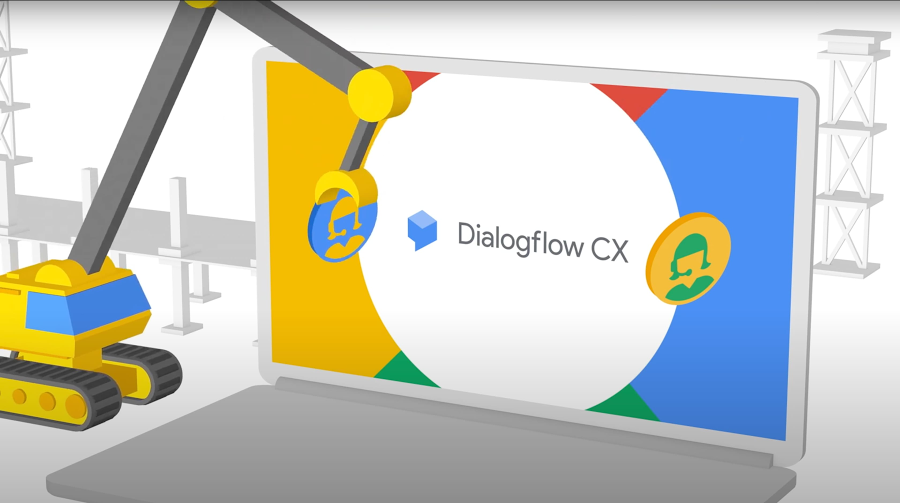Six new features in Dialogflow CX
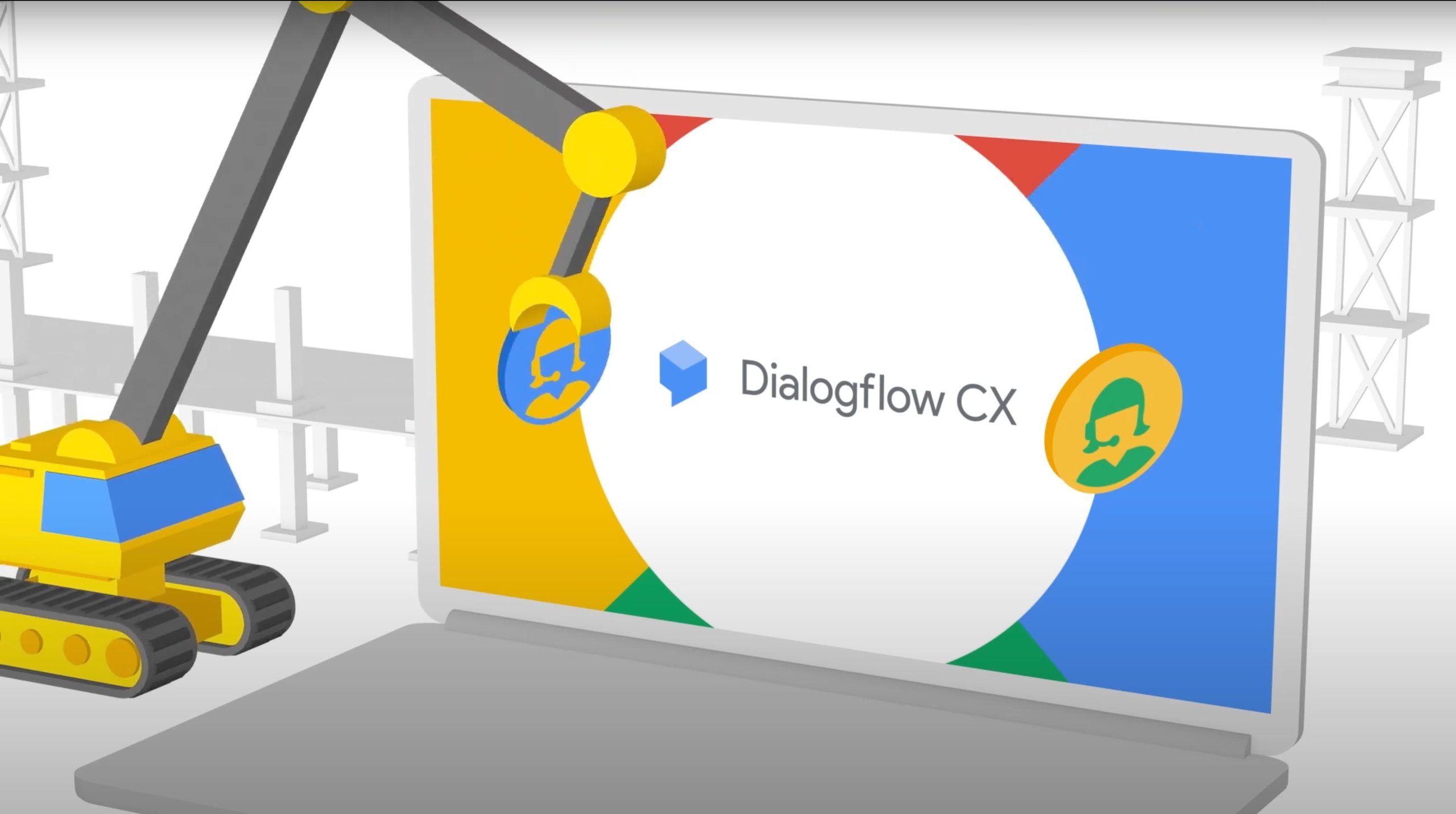
Surabhi Bhate
Product Manager, Dialogflow CX
Try Google Cloud
Start building on Google Cloud with $300 in free credits and 20+ always free products.
Free trialToday, we are excited to announce the public preview of six new features in Dialogflow CX that make it the best chatbot virtual agent for enterprises.
With these features, our customers will be able to improve the end-user conversational experience and manage security and deployment better. These launches also include some console improvements and built-in support for making the bot building experience more efficient.
Here’s a selection of what’s new:
- Streaming partial response
- Private network access to Webhook targets
- Search in console
- System functions support
- Continuous tests and deployment
- Change Diffs in Change History
Streaming Partial Response
Until now, Dialogflow CX was only able to send ordered responses to the end user once the agent’s turn was over (which includes webhook execution). For some customers, it can take 10-15 seconds for their webhooks to execute, during which time, the bot is silent and the end user is left waiting (and probably wondering!)
Owing to the Streaming Partial Response feature, if a webhook will likely run for a long time, customers can now add a static response in the fulfillment and enable partial response when using streaming APIs. This way, the Dialogflow Streaming API will send partial bot responses to the user while the webhook is executing, improving the ‘perceived’ latency in such scenarios.
Here’s a sample conversation without partial response:
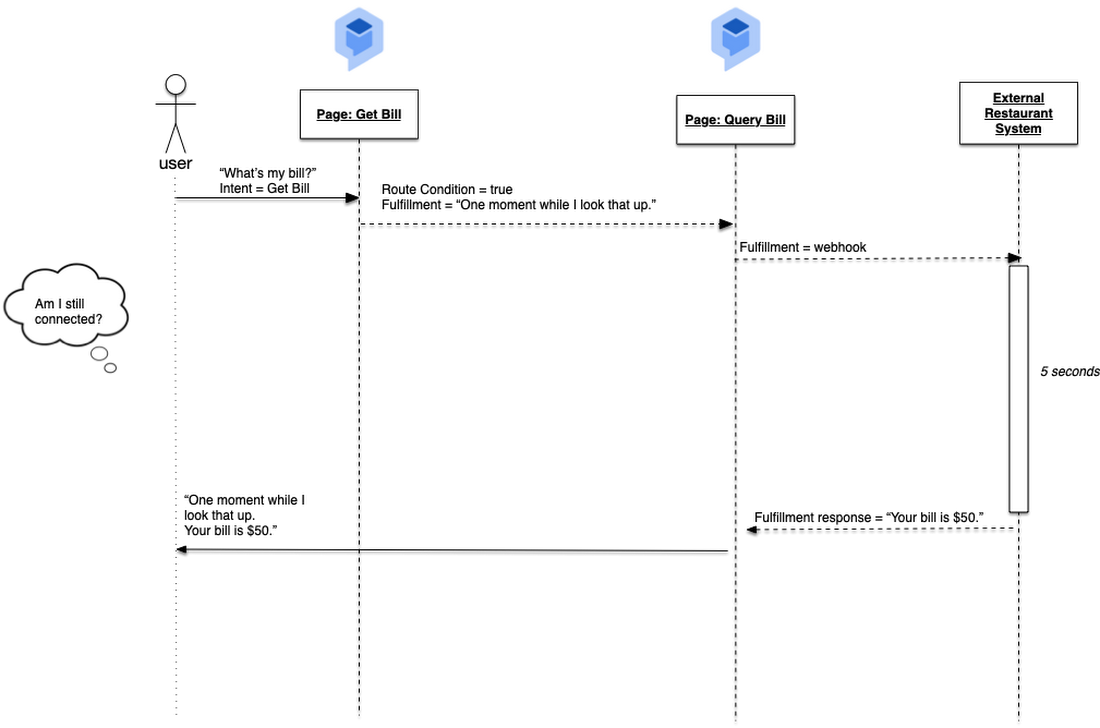

Now, a sample conversation with partial response:
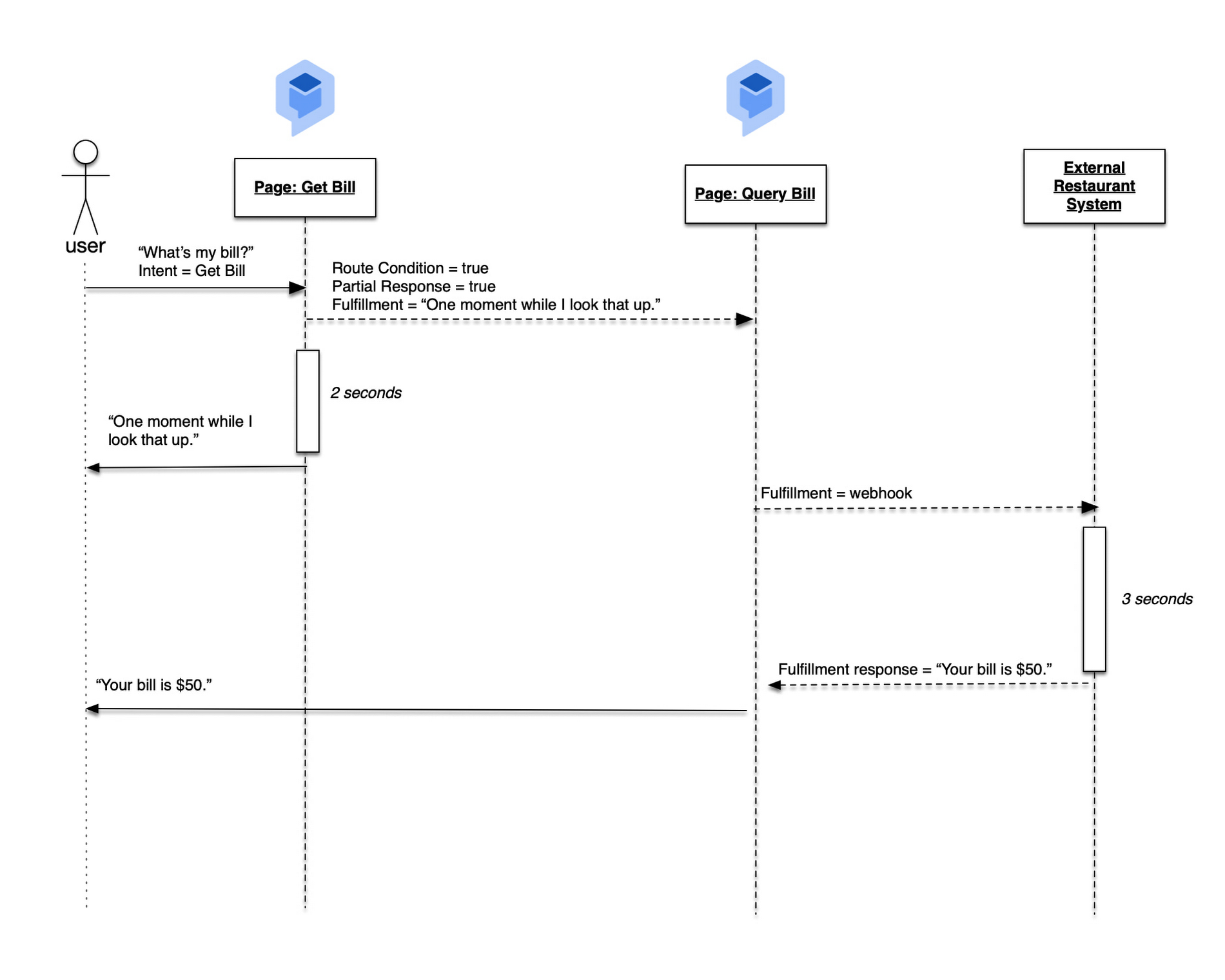

To enable partial response use the toggle button under the 'Fulfillment' section in the Dialogflow CX UI as shown below:
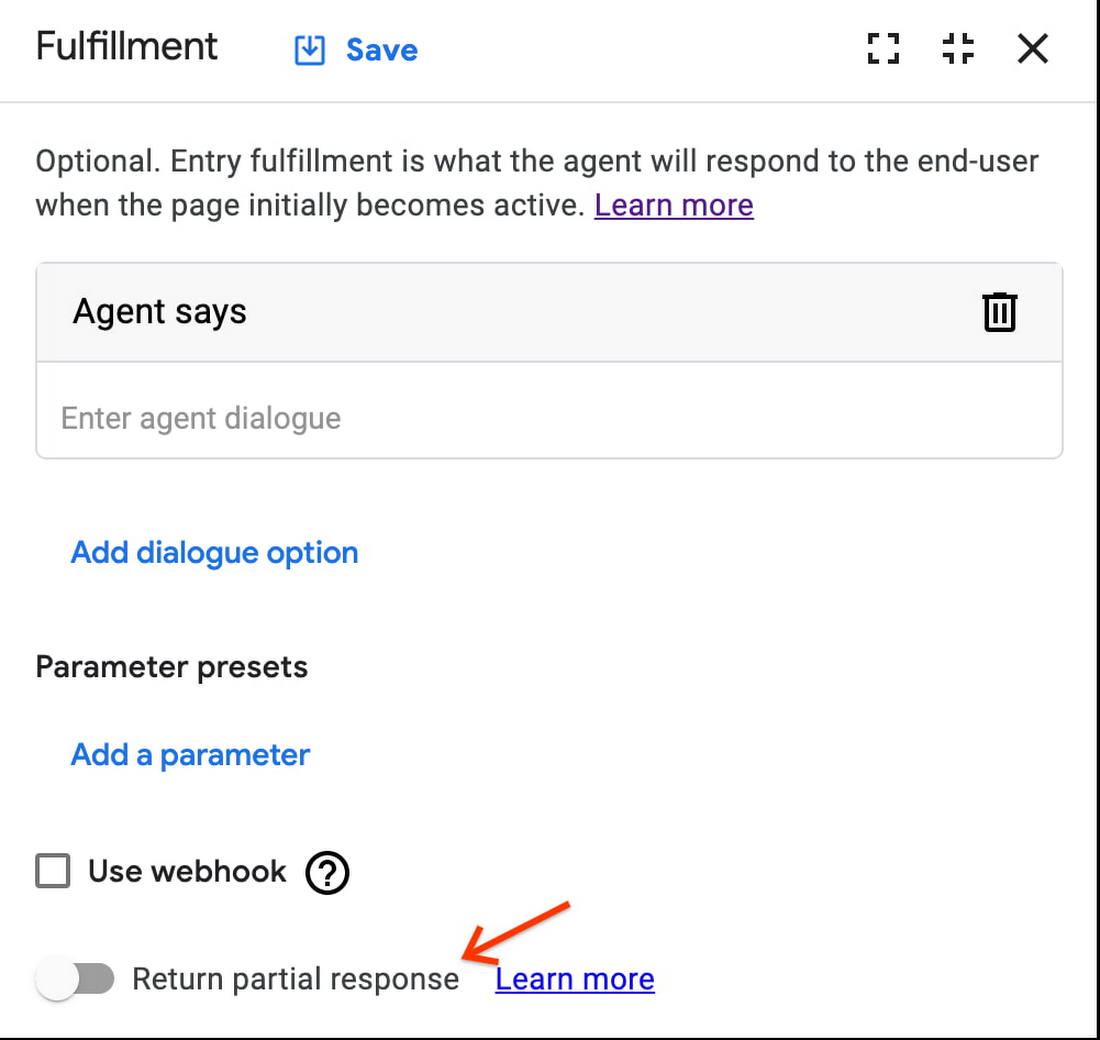

Private network access to Webhook targets
Dialogflow now integrates with Service Directory private network access so it can connect to webhook targets inside our customers' VPC network. This keeps the traffic within the Google Cloud network and enforces IAM and VPC Service Controls for enterprise security.
Learn more about setting this up in our Dialogflow CX documentation.
Search Everywhere
Wondering how to navigate through hundreds of intents, thousands of training phrases? Dialogflow CX’s new global search functionality enables users to search, filter and access resources like pages, intents, training phrases, entity types, webhooks, route groups and more. One can easily search relevant resources using the ‘resource type’ filter while searching.
Search results can further be narrowed down by clicking on the ‘Search Options’ icon. This allows users to specify a criteria for filtering search results. For instance, users can search for intents containing a certain training phrase, routes referencing a certain intent and more.
Continuous Tests and Deployment
Building an enterprise-grade bot often involves intensive QA (Quality Assurance) and deployment processes, which can lead to a lot of manual work. The CI/CD (Continuous Integration/Continuous Deployment) feature in Dialogflow CX aims to assist bot developers with new tools to manage their bot release cycles.
Using this feature, one can automatically run a set of test cases configured for an environment to verify the intended behavior of the agent in that environment. Users can also use the continuous deployment setting to run verification tests before deploying a flow version to the environment to prevent unintended behaviors and minimize errors.
System functions
Dialogflow now has supported system functions that can execute common arithmetic, string manipulation, conditional and date/time operations. This will save our users the extra effort to write code for these operations, thus improving efficiency. This is also a step towards centralization of business logic of the bot, reducing dependency on webhooks. Customers can apply these inline system functions in their agent's conditions and fulfillments (such as text responses, conditional responses and parameter presets) to generate dynamic values during conversations.
Here’s an example:
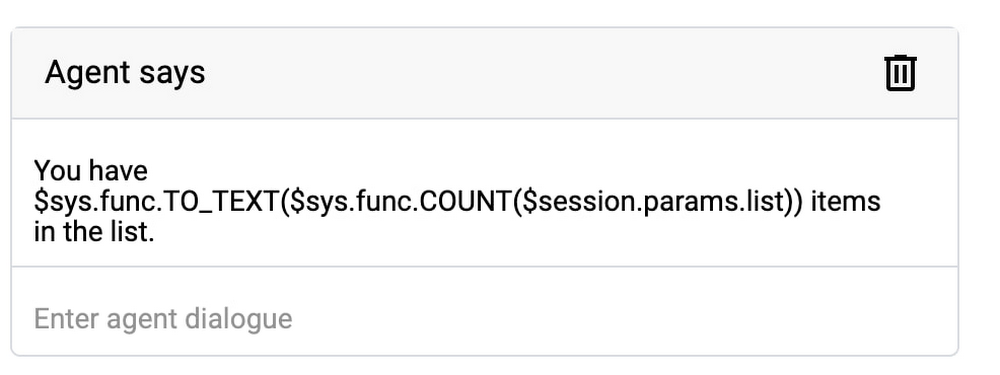

Here the agent is responding back with a dynamically calculated count of the number of items in a customer’s list. The dynamic calculation is made possible by simply using system functions for counting the number of parameters (COUNT) in the session and converting that number to text (TO_TEXT) for display.
Current Functions list:
Arithmetic operations: ADD, MINUS, RAND
String manipulation: LOWER, SUBSTITUTE, SPLIT, JOIN, CONCATENATE, MID, LEN, TO_TEXT, CONTAIN
Conditional: IF
Date/time: NOW, FORMAT_DATE
Other: COUNT
Change Diffs
Dialogflow CX makes it really easy to work with teams on a single agent, with this new enhancement to the Change history feature in Dialogflow CX, which logs changes made to the agent. Users can now click each entry in the change history table to view the before and after of each resource and see exactly what changed.
Sample screenshot:


Conclusion
With these new features in Dialogflow CX, it is easier for enterprises to build and manage large and complex agents. Streaming partial responses will improve the experience of the end user when connecting to external systems via webhooks. The search functionality and system functions will help make the bot building process more efficient. The features around continuous tests and deployment will make it easier to manage the CI/CD pipeline. And with the Service Directory integration for private network access in webhooks, enterprises can better secure their back-end code. Finally, change diffs along with change history will make change management easier while working with large teams.
Stay tuned for more features that will enhance the collaboration experience in Dialogflow CX, visual builder improvements and features to help our power users build and manage bots more efficiently.
